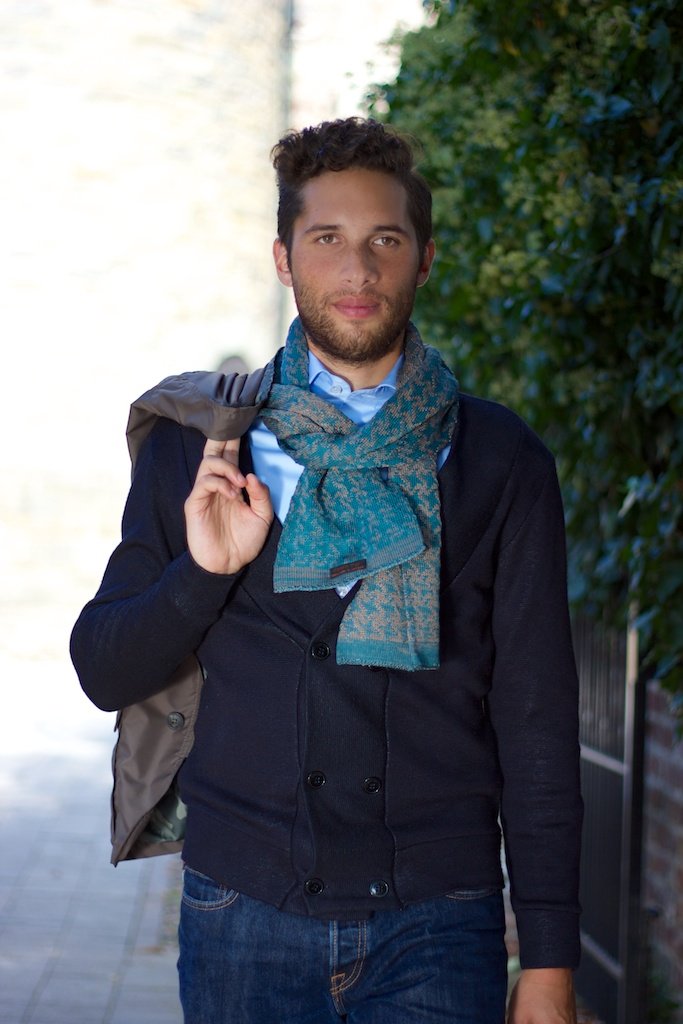Pied de poule, a 4000 year old story
Christian Dior New Look Spring 1948
The image above, dating 1948, represents an iconic moment in the history of the Pied de poule pattern. In that year the young French designer Christian Dior launched his dazzling and daring debut show called "New Look" that shook up the fashion world. In this collection he introduced the ancient houndstooth pattern as a timeless code of style and a symbol of Christian Dior's love for England. In French it was translated to Pied de poule.
4000 Years ago
The oldest Bronze Age houndstooth textiles date from 1500 - 1200 BC. They were found in the present area of Salzburg in Austria and made by people of the Hallstatt Culture, who lived there during the late Bronze age
The Clerum Cloak 360 - 100 BC
The mystery of the Gerum Cloak
One of the best known early occurrence of houndstooth is the Gerum Cloak, a garment discovered in the 1920s on Gerum mountain in the county of Västergötland, Sweden. It was found in a peat bog. It had been folded up and 3 stones were placed on it presumably by whomever left it in the bog. They also discovered there were several of gashes in the cloak, speculated to be caused by a bronze dagger.
Years later, the Swedish National Laboratory of Forensic science analyzed it and agreed the cloak has five cuts made by a knife or dagger. If the cloak was worn, the stabs would have struck the body in the chest, abdomen, spine, and neck. The person who wore this cloak was possibly murdered with a dagger. But where is the body? And why was the cloak neatly folded with 3 stones on top? Some mysteries may never be solved.
The Gerum cloak looks very brown now because it lived in a bog for 2000 years, but the original colors were brown and white, like in the replica below.
A shepherds favourite
In that same period, sometime between 360 AD and 100 AC, the houndstooth pattern appeared in the Scottish lowlands near the Anglo Saxon border, that’s why it's also called Border Tartan.
As one of the more ancient tartan types, houndstooth is believed to have been created by non-clansman and originally made on a woven wool cloth.
From the most humble beginnings houndstooth was worn by shepherds as an outer garment.
For those of us that like the technical, Houndstooth check is a two-toned textile pattern. At its beginnings it was a wool cloth weaving white sheep wool for the lighter checks and a darker wool for the contrasting black ones, usually from a naturally tinted wool weaving or simply from a black sheep. It is made with alternating bands of four dark and four light threads in both warp and weft – two over and two under the warp created a sort of broken check or jagged shape giving the woven its name. Because of the abstract four-pointed shape the pattern was referred to as “shepherd’s check,” “dogtooth” and “puppytooth" for a mini check.
From shepherd to Lord
The actual term houndstooth for the pattern is not recorded before 1936. After many centuries dogstooth lost its purpose as a utilitarian pattern and started to be acquired by high society. Much like stripes being adopted from sailors, Houndstooth started pop up as a way for the higher class to refresh style. In the 1930s, the houndstooth pattern was adapted by the wealthy.
Houndstooth made its first appearance in Vogue in januari 1934, under the title “H.R.H. started it”
Inspiration for all the great designers
Now we are at the point were this story began, in the spring of 1948 in Paris.
After its glorious introduction to high fashion by Dior, the now Pied de poule never left the runway. It was adopted by all the great designers of timeless classics as Chanel, Balmain, Oscar de la Renta, Louis Vuitton, and many others.
Rather than weaving the pattern, as was the style of the British, they would also print the distinctive shapes onto fabric for their collections.
Larger than life by Alexander mcQueen
Alexander McQueen took the pattern to an even higher level in his Fall 2009 Collection, entitled Horn of Plenty. By dressing his models in Houndstooth from head to toe, he made his own reference to Christian Dior’s signature tweed suits.
From 2010 onwards the pattern is continuously used across couture from Chanel to Ferragamo to ready-to-wear and still remains so strikingly vogue.
The pied de poule has come quite a long way from its early beginnings on the backs of sheepherders. Designers from across the globe have re-envisioned the traditional mosaic by toying with its color and scale.
Studio Myr
As a lover of classic and timeless style, and ancient craftsmanship I made my own humble attribution to the 4000 year old tradition. Being a knitwear designer, I adjusted it to a knitwear pattern and incorporated it in several timeless designs. I gave it my own signature by mixing the treads randomly, creating a dynamic, playful image. Take a look on my website and enjoy!














